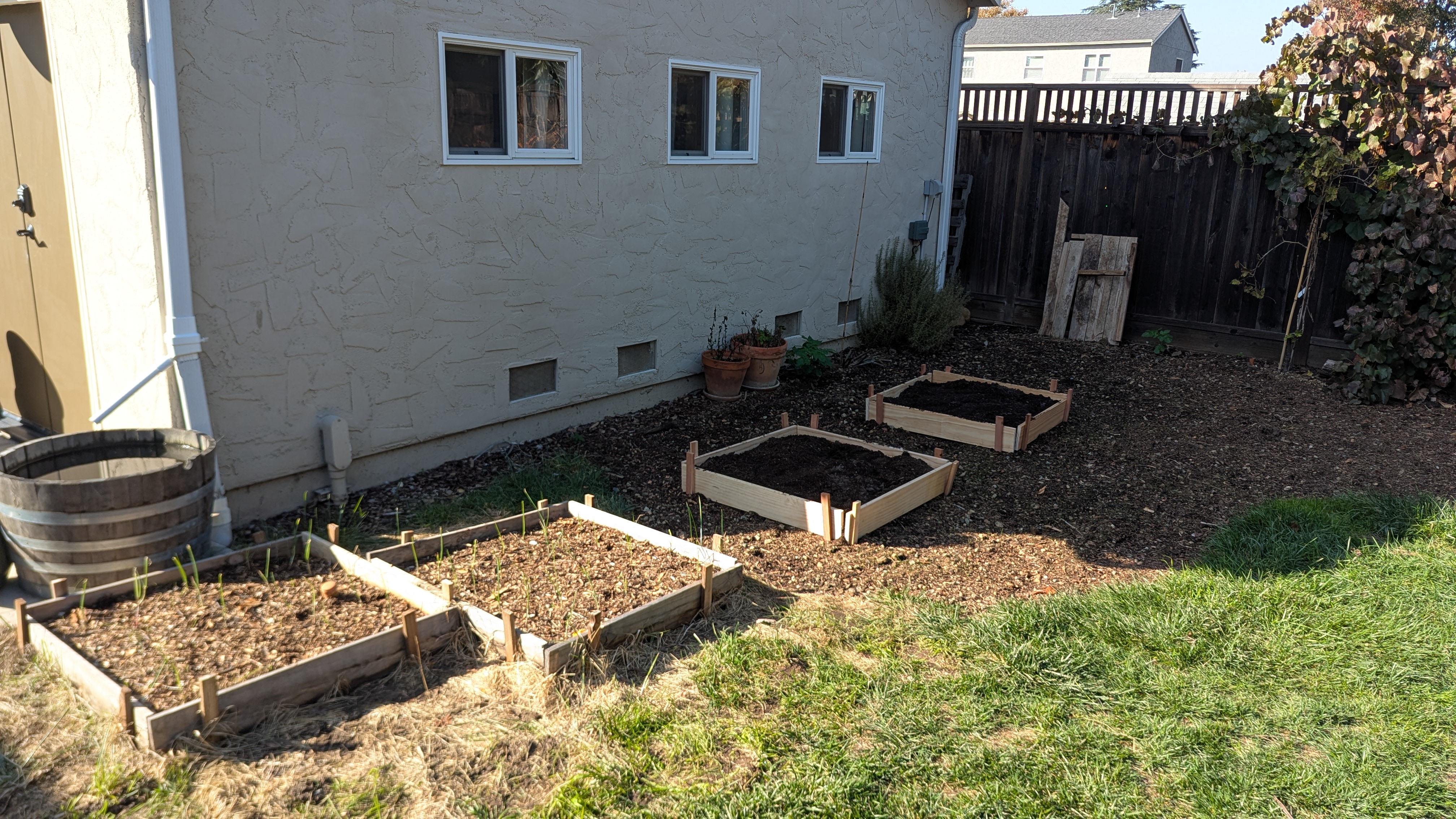Impermanence is a virtue: Why building for forever is folly
When I first started gardening, I was jealous of all the beautiful gardens I saw on social media. On Instagram I saw so many beautiful gardens filled with gorgeous raised beds. Or the gardeners were building these amazing structures for growing their annual vegetables. So, of course, I wanted the same thing for my garden.
I ordered fancy metal raised beds by whatever company was being advertised by the social media gardeners. You know the ones I'm talking about. They're about three two and a half feet tall and they look like they're made from corrugated tin. When they arrived, I assembled them and placed them in my yard, and filled them with some pretty expensive soil.
In fact, I dotted my entire backyard with raised beds. Some of them I purchased online, but others I built for myself from lumber I got at the hardware store. I put raised beds on my lawn, on my patio, and on all the ugly concrete that was laid by the last owner of my home. I was reclaiming that space for garden vegetables!
But there was still some leftover space in my backyard. There were a few spots of neglected, in-ground soil where I decided that I could plant a few seeds directly in the soil.
Then I watched my plants grow, and I was surprised by what happened. The raised beds required much more water than the plants in the ground. In fact, they required thorough watering on every hot day of the summer. The ones on hot concrete required even more water, and I indignantly watched a lot of it filtering out the bottom and into the drain!
In fact, the seeds in the soil germinated more quickly, required less care, and produced far, far more fruit.
Getting the moisture and the soil right in a tall raised bed turned out to be very difficult.
So the following year I decided to change things up. I took apart the raised beds that I'd built from lumber, and I turned them into shallow raised beds directly on the soil. A shallow, 6 inch deep raised bed has some of the advantages of a raised bed along with some of the advantages of planting directly in the ground.

That turned out to be the most successful planting method that I've yet discovered. A shallow raised bed directly on the ground is easy to care for, easy to maintain, and easy to build. It's affordable, too. It requires less lumber, and less soil. It costs a fraction of what the fancy metal beds cost, and it even costs less than tall homemade beds.
Unfortunately, I was then stuck with all the "fancy" raised beds I'd purchased online. They looked more like expensive trash than the key to backyard success.
Buying those metal raised beds was a mistake.

And unfortunately, so much of my yard was taken up by a patio that I didn't have room for a bunch of shallow raised beds directly on the soil.
I knew that in order to install more shallow raised beds, the patio would have to come out, even though it wasn't very old. The previous owner had only put it in to sell the place around six years ago.
Building the patio had also been a mistake.
I know now that building for "permanence" is absurd. Especially in the garden. It's nothing but hubris to think that the thing you're building this year will last forever.
It won't.
And not only that, but you won't even want it to last forever. In a year or two or three, you will start to see the flaws in the thing you built. Maybe you'll see that you put it in a suboptimal place, or that it isn't quite right for what you planned to use it for. Or maybe you'll just tire of whatever motivated you to build it in the first place.
You WILL change. You WILL move on. You WILL see things differently.
Which is why I now build beds that I can easily disassemble, move, and reuse. I build garden beds simply by cutting lumber into one meter square sections, and tacking them into the ground using wooden stakes.
These beds cost next to nothing, they are the BEST way to grow annual vegetables, and they can be easily disassembled and moved every time I decide to do something different.
The thinking that we need to build something to last can be a trap. It's what leads people to build shopping malls that sit empty after shopping trends move on. It's what leads people to build from materials that will be used for a few years at most, then will idle in a landfill for eternity.
Don't get me wrong, the idea of single use items isn't great either.
But there is a middle ground.
Building for impermanence is a virtue because it's an extension of using only what you need.
So build that cheap garden bed out of biodegradable materials. When you inevitably regret it, or want to change it next year, it will be that much easier to do so.
